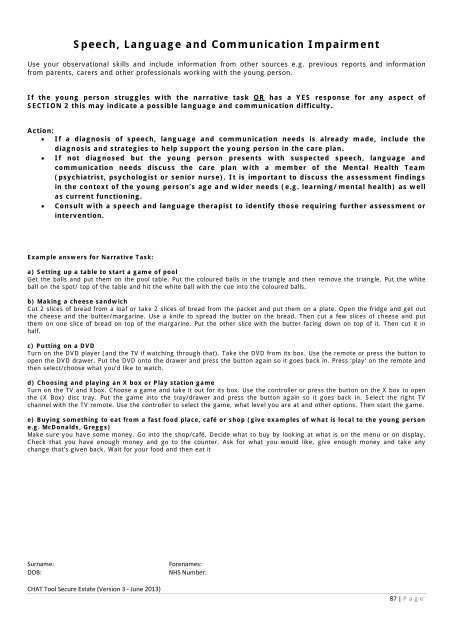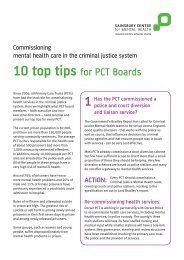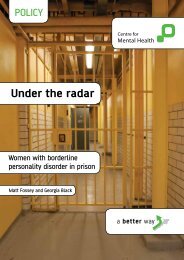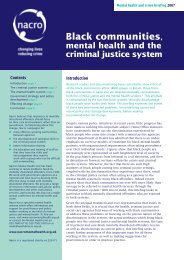CHAT Tool - Offender Health Research Network
CHAT Tool - Offender Health Research Network
CHAT Tool - Offender Health Research Network
Create successful ePaper yourself
Turn your PDF publications into a flip-book with our unique Google optimized e-Paper software.
Speech, Language and Communication Impairment<br />
Use your observational skills and include information from other sources e.g. previous reports and information<br />
from parents, carers and other professionals working with the young person.<br />
If the young person struggles with the narrative task OR has a YES response for any aspect of<br />
SECTION 2 this may indicate a possible language and communication difficulty.<br />
Action:<br />
• If a diagnosis of speech, language and communication needs is already made, include the<br />
diagnosis and strategies to help support the young person in the care plan.<br />
• If not diagnosed but the young person presents with suspected speech, language and<br />
communication needs discuss the care plan with a member of the Mental <strong>Health</strong> Team<br />
(psychiatrist, psychologist or senior nurse). It is important to discuss the assessment findings<br />
in the context of the young person’s age and wider needs (e.g. learning/mental health) as well<br />
as current functioning.<br />
• Consult with a speech and language therapist to identify those requiring further assessment or<br />
intervention.<br />
Example answers for Narrative Task:<br />
a) Setting up a table to start a game of pool<br />
Get the balls and put them on the pool table. Put the coloured balls in the triangle and then remove the triangle. Put the white<br />
ball on the spot/ top of the table and hit the white ball with the cue into the coloured balls.<br />
b) Making a cheese sandwich<br />
Cut 2 slices of bread from a loaf or take 2 slices of bread from the packet and put them on a plate. Open the fridge and get out<br />
the cheese and the butter/margarine. Use a knife to spread the butter on the bread. Then cut a few slices of cheese and put<br />
them on one slice of bread on top of the margarine. Put the other slice with the butter facing down on top of it. Then cut it in<br />
half.<br />
c) Putting on a DVD<br />
Turn on the DVD player (and the TV if watching through that). Take the DVD from its box. Use the remote or press the button to<br />
open the DVD drawer. Put the DVD onto the drawer and press the button again so it goes back in. Press ‘play’ on the remote and<br />
then select/choose what you’d like to watch.<br />
d) Choosing and playing an X box or Play station game<br />
Turn on the TV and Xbox. Choose a game and take it out for its box. Use the controller or press the button on the X box to open<br />
the (X Box) disc tray. Put the game into the tray/drawer and press the button again so it goes back in. Select the right TV<br />
channel with the TV remote. Use the controller to select the game, what level you are at and other options. Then start the game.<br />
e) Buying something to eat from a fast food place, café or shop (give examples of what is local to the young person<br />
e.g. McDonalds, Greggs)<br />
Make sure you have some money. Go into the shop/café. Decide what to buy by looking at what is on the menu or on display.<br />
Check that you have enough money and go to the counter. Ask for what you would like, give enough money and take any<br />
change that’s given back. Wait for your food and then eat it<br />
Surname:<br />
DOB:<br />
Forenames:<br />
NHS Number:<br />
<strong>CHAT</strong> <strong>Tool</strong> Secure Estate (Version 3 - June 2013)<br />
87 | P age
















